
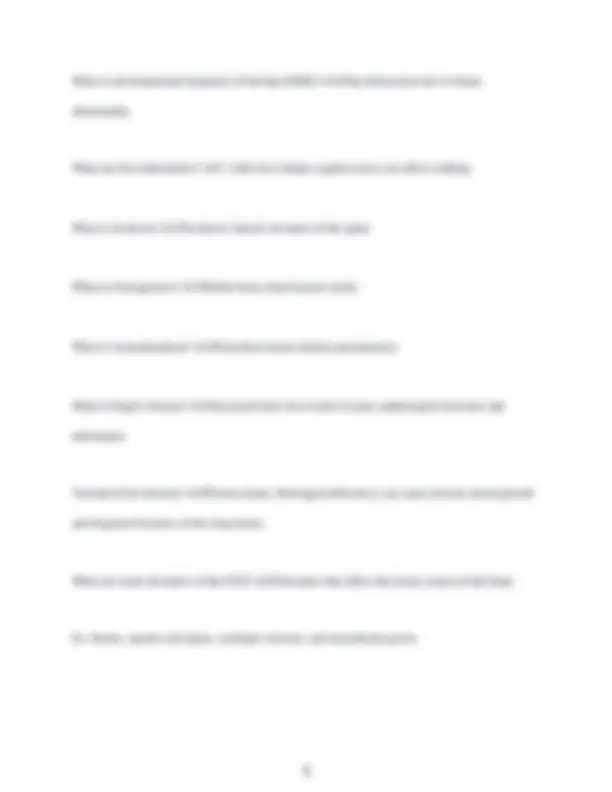

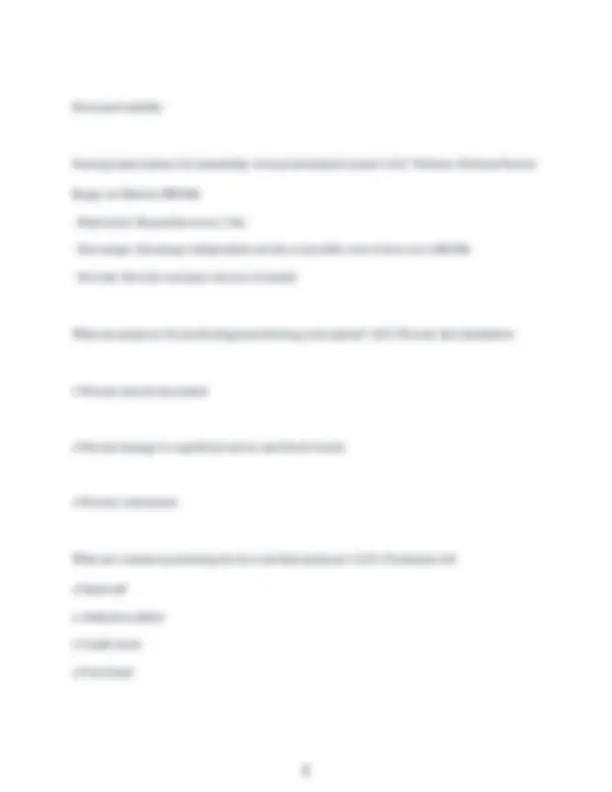
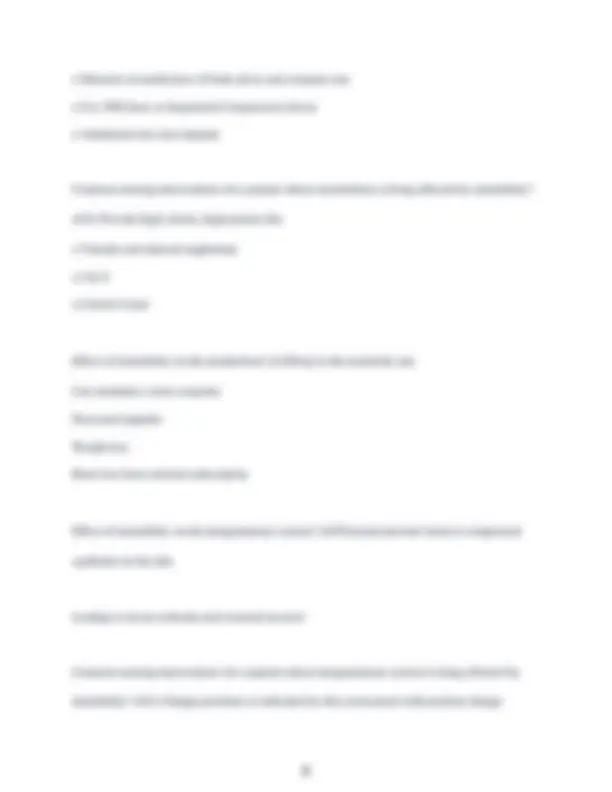
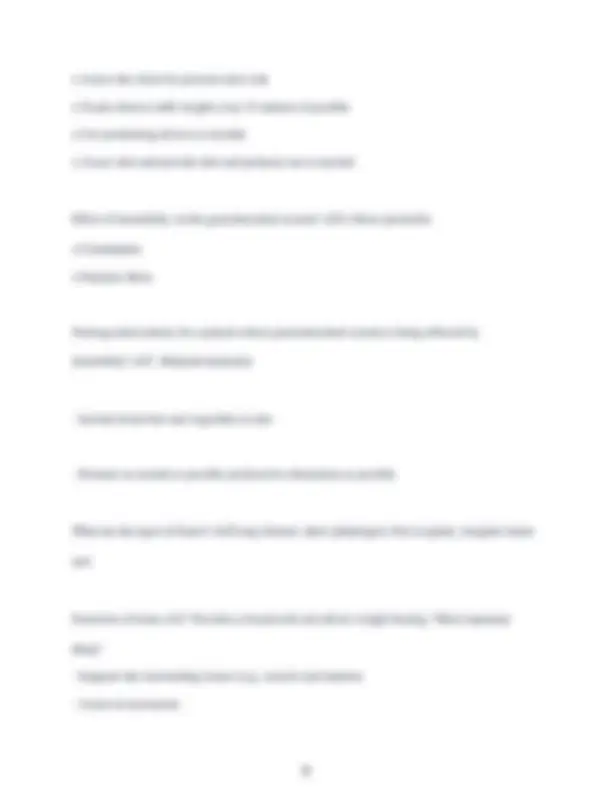
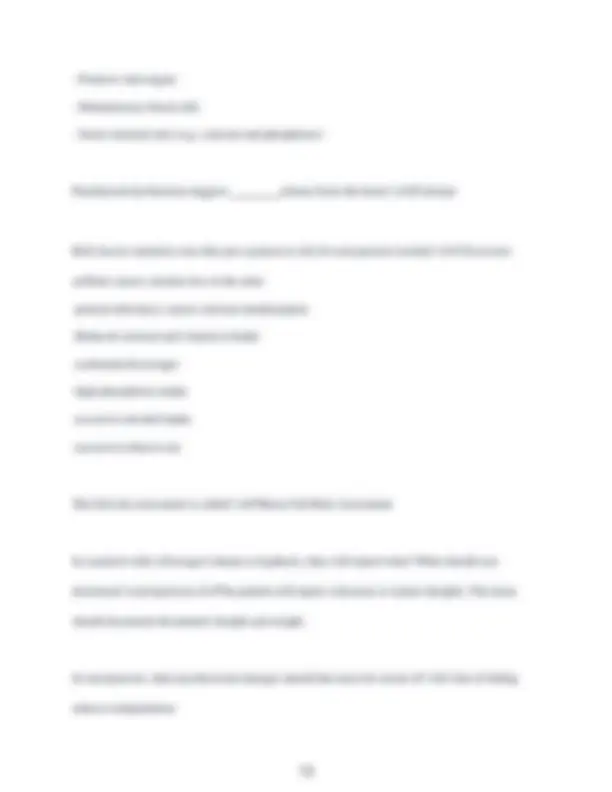
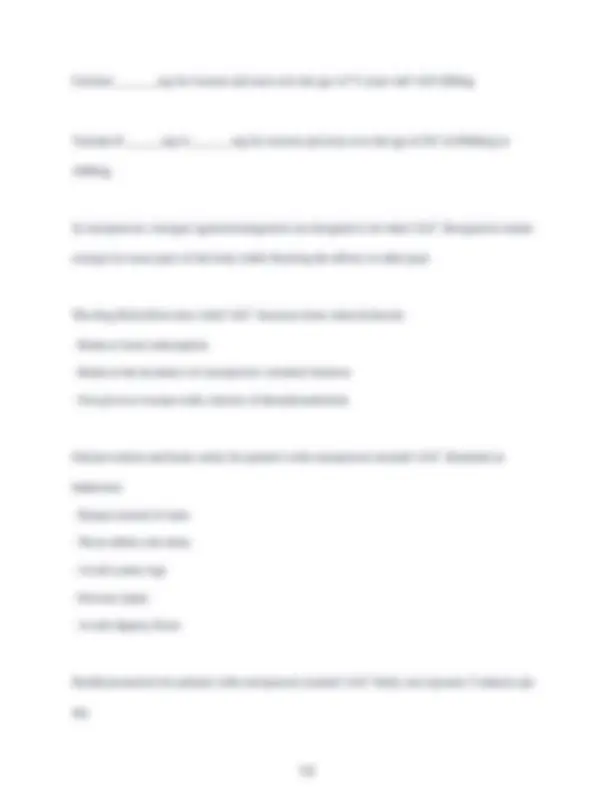
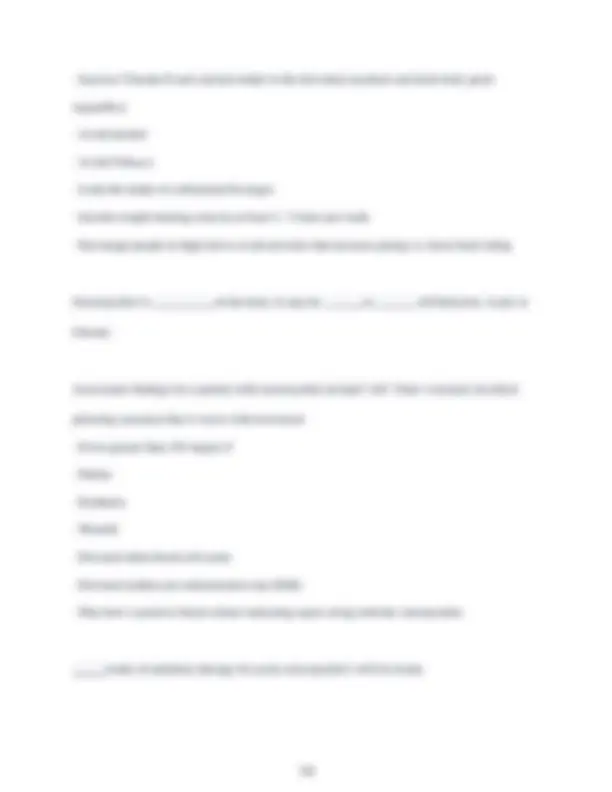
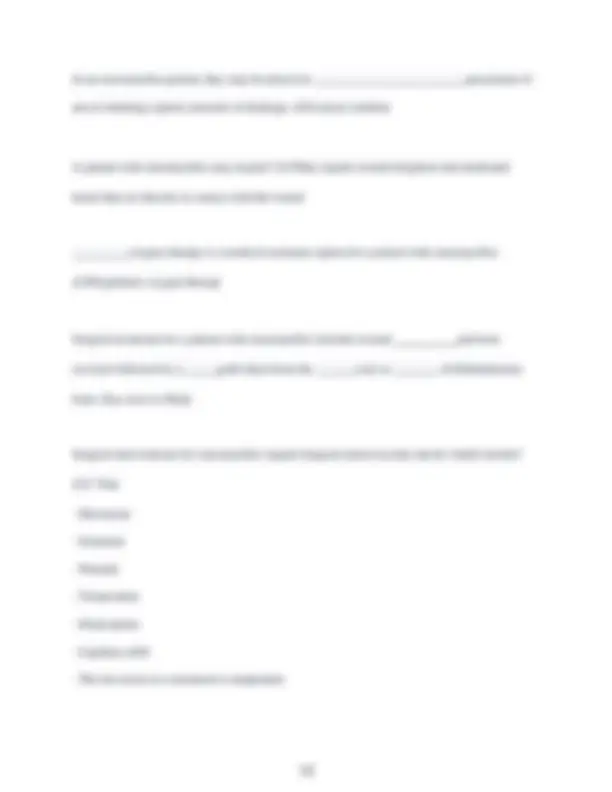


Study with the several resources on Docsity

Earn points by helping other students or get them with a premium plan


Prepare for your exams
Study with the several resources on Docsity

Earn points to download
Earn points by helping other students or get them with a premium plan
Community
Ask the community for help and clear up your study doubts
Discover the best universities in your country according to Docsity users
Free resources
Download our free guides on studying techniques, anxiety management strategies, and thesis advice from Docsity tutors
Rasmussen MDC1 Exam 2 Questions and Answers 2025 Graded A+
Typology: Exams
1 / 15

This page cannot be seen from the preview
Don't miss anything!










What factors affect mobility? ✔✔Developmental age, nutritional status, lifestyle choices, stress, environment, and diseases. What are some diseases that affect mobility? ✔✔Rheumatoid arthritis, osteoarthritis, osteoporosis, ankylosing spondylitis, gout, osteoporosis, osteomyelitis, and bone tumors. What is Rheumatoid Arthritis and some clinical manifestations? Most frequent in? ✔✔It is systemic autoimmune disease causing chronic inflammation of the joints and connective tissue. C/S: Causes pain, deformities, fever, fatigue, weakness, weight loss and loss of function. Most frequent in mid-life age and females. What is osteoarthritis and some clinical manifestations? Most frequent in? ✔✔Loss of articular cartilage in the joint. C/S: · Causes pain, stiffness, crepitus, aggravated weight-bearing and joint use. Most frequent in females.
What is Ankylosing Spondylitis? ✔✔Chronic inflammatory joint disease that causes stiffens and fusion of the spine and sacroiliac joints What is Gout? ✔✔Inflammatory response to high-levels of uric acid. Forms tophi (white nodules) in the synovial fluid. What is Osteoporosis? Most Common in? Best Treatment? ✔✔Decrease in total bone density when osteoclast activity is higher than osteoblast. Most common in females at menopause age. The best treatment is prevention by proper diet high in calcium, fluoride and minerals. What is Osteomyelitis? ✔✔Infection of the bone. Can develop after injury, surgery or traumas. What are bone tumors? ✔✔Affects form and function. Causes pain and severely impedes mobility. What is Syndactylism? ✔✔Fusion on one or more fingers.
What diseases can occur from other systems besides CNS that can be affected by mobility? ✔✔Respiratory disease: Limit mobility tolerance due to lack of oxygen Circulatory disorders: Impairs tissue oxygen delivery causing pain, edema, discomfort, etc. Fatigue: Limits activity to a short period of time. Bedrest: reduces overall activity What are the affects of immobility on the musculoskeletal system? ✔✔12% loss of muscle strength per week Osteoporosis Change in calcium metabolism leading to possible formation of renal calculi Impaired balance Foot drop Altered joint mobility Pathological fractures
Decreased stability Nursing interventions for immobility of musculoskeletal system? ✔✔· Perform: Perform Passive Range on Motion (PROM) · Reposition: Reposition every 2 hrs. · Encourage: Encourage independent activity as possible even in best rest (AROM) · Provide: Provide assistance devices if needed What are purposes for positioning/repositioning your patient? ✔✔o Prevent skin breakdown o Prevent muscle discomfort o Prevent damage to superficial nerves and blood vessels o Prevent contractures What are common positioning devices and their purposes? ✔✔o Trochanter roll o Hand roll o Abduction pillow o Cradle boots o Foot board
Common nursing interventions for a patient whose respiratory system is being affected by immobility? ✔✔o Turn, Cough and Deep breath every 2 hours o Incentive spirometer every 2 hours while awake o Use chest physiotherapy o Encourage fluid intake of at least 2000 mL per day unless contraindicated o Assess lungs, cough, and sputum production at least every shift Effects of immobility on the circulatory system? ✔✔Increases the workload of the heart Promotes venous stasis Orthostatic hypotension Risk of thrombus formation Common nursing interventions for a patient whose circulatory system is being affected by immobility? ✔✔o Increase client's activity as soon as possible o Assess for peripheral, sacral and pedal edema o Assess calves for signs and symptoms of thrombus formation (redness, warmth and tenderness)
o Measure circumference of both calves and compare size o Use TED hose or Sequential Compression device o Administer low dose heparin Common nursing interventions for a patient whose metabolism is being affected by immobility? ✔✔o Provide high calorie, high protein diet o Vitamin and mineral supplement o I & O o Calorie Count Effect of immobility on the metabolism? ✔✔Drop in the metabolic rate Can stimulate a stress response Decreased appetite Weight loss Bone loss from calcium reabsorption Effect of immobility on the integumentary system? ✔✔External pressure leads to compressed capillaries in the skin Leading to tissue ischemia and eventual necrosis Common nursing interventions for a patient whose integumentary system is being affected by immobility? ✔✔o Change positions as indicated by skin assessment with position change
· Protects vital organs · Manufactures blood cells · Stores mineral salts (e.g., calcium and phosphorus) Parathyroid dysfunction triggers release from the bones? ✔✔Calcium Risk factors nutrition wise that put a patient at risk for osteoporosis include? ✔✔-Excessive caffeine causes calcium loss in the urine
Calcium mg for women and men over the age of 71 years old? ✔✔1200mg Vitamin D mg to mg for women and men over the age of 50? ✔✔800mg to 1000mg In osteoporosis, estrogen agonsist/antagonists are designed to do what? ✔✔· Designed to mimic estrogen in some parts of the body while blocking the affects in other parts The drug Raloxifene does what? ✔✔· Increases bone mineral density · Reduces bone reabsorption · Reduces the incidence of osteoporotic vertebral fractures · Not given to women with a history of thromboembolism Fall prevention and home safety for patient's with osteoporosis include? ✔✔· Handrails in bathrooms · Ramps instead of stairs · Wear rubber sole shoes · Avoid scatter rugs · Prevent clutter · Avoid slippery floors Health promotion for patients with osteoporosis include? ✔✔· Daily sun exposure 5 minutes per day
Osteomyelitis is of the bone. It may be or. ✔✔Infection. Acute or · Increase Vitamin D and calcium intake in the diet (dairy products and dark leafy green vegetables) · Avoid alcohol · Avoid Tobacco · Limit the intake of carbonated beverages · Include weight-bearing exercise at least 3 - 5 times per week · Encourage people at high risk to avoid activities that increase jarring i.e. horse back riding Chronic. Assessment findings for a patient with osteomyelitis include? ✔✔· Pain—constant, localized pulsating sensation that is worse with movement · Fever greater than 101 - degree F · Edema · Erythema · Warmth · Elevated white blood cell count · Elevated erythrocyte sedimentation rate (ESR) · May have a positive blood culture indicating sepsis along with the osteomyelitis weeks of antibiotic therapy for acute osteomyelitis? ✔✔ 4 - 6 weeks